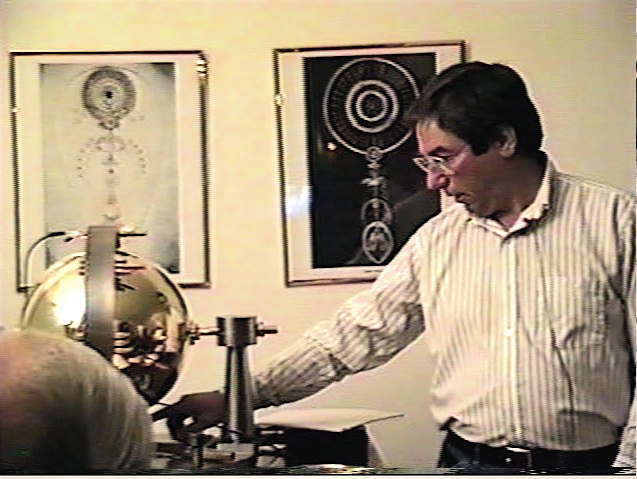 |
| In court? Need assistance? Jurisdictionary |
 |
| Your Own Credit Repair Business |
|
Topic: John Keely's
Laws of Harmony Section: Law of Pitch of Atomic Oscillation Table of Contents to this Topic |
|
"Atoms not isolated and in a state of tension between forces that oppose and increase the equilibrium oscillate bodily at a pitch that is a resultant of the atomic weight, atomic volume, and tension." Commentary July, 1987 If an atom is part of an aggregate and it is caught between the two forces as Keely defined and used them, i.e., the harmonic which tends to stabilize or equates forces and the enharmonic which tends to destabilize or create dis-equilibrium, it will oscillate as a resultant computed from the atomic weight, atomic volume and tension acting upon it. What we are beginning to see here is Keely's system of atomic physics. In this law and the next few we will see a totally new system laid out before us. One that is natural, whole and very simple when compared to the current system now in use which has a tendency to separate the various aspects of atomic physics into distinct and unrelated forms. His various tables, charts and monitoring devices were all synchronized or related in such a fashion as one reading on a given chart would bear direct and meaning relations to other readings of other charts, measurements, etc.. In other words, his system was complete, relative and whole. In order to get a better understanding of what Keely meant by volume and weight of the atom let us quote how he determined these characteristics: MATHEMATICAL DEMONSTRATION OF THE SIZE OF AN ATOM ITS WEIGHT AND VOLUME by John Keely "A rectangular, or preferably, a circular, disk is suspended from the ceiling of a room in such a manner that vibrations cannot be communicated to it from the vibrating walls of the room. It is the experimentally determined to what fundamental note the metal plate sympathetically vibrates. Then, according to the law of linear dimensions, which is equally applicable to solids, liquids, or gases, it is mathematically determined what size of plate will produce successive octaves above that pitch, until a size of plate is obtained capable of producing a period-frequency corresponding to that of dark radiant heat, which we know is produced by the oscillations of atoms, and is termed therma. The vibrating atomic substance of the plate is capable of producing the transmissive force called sound and sono-thermism, which is propagated through atomic media by wave-motion, but which cannot be propagated through space devoid of atomic substance. But when the plate has been reduced theoretically to a size sufficiently infinitesimal to correspond to the maximum or minimum size of an atom, as determined by the atomic researches of Professors Tait & Clerk Maxwell, we reach vibration frequency so high that it can be propagated through a vacuum devoid of atomic substance, as a transmissive force called rad-energy, beginning with dark radiant heat. And be it carefully observed that period-frequency corresponds with that of dark rad-energy. The law of linear dimensions may be thus stated: The vibration-periods of two similarly circumstanced homologous bodies are to each other as their cubical contents, and therefore the vibration-frequencies of homologous metal plates are to each other as the inverse ratio of their linear dimensions. The octave of a given plate will be a homologous plate having 1/8 of its volume. A circular disk twenty inches in diameter and one inch thick vibrates, e.g., 1024 times per second. The ten octaves from unity successively reducing the size of the disk by 1/8, we get at each reduction the octave of the previous pitch, and at any given octave we have the volume, weight, and vibration-frequency of the vibrating atomic substance. Ten octave 1024 vibrations per second; metal disk, twenty inches in diameter, one inch thick. To get the cubical contents of this vibrating aggregate it is necessary to square the diameter; we multiply by 0.7854, which is equal to 314.16 inches in volume. Starting from this point, we progress through successive octaves upward increasing in pitch and diminishing in size." |
| See Also: |
 |
